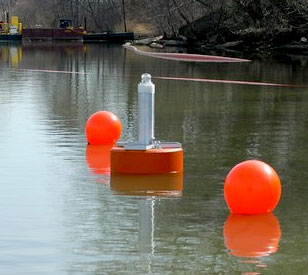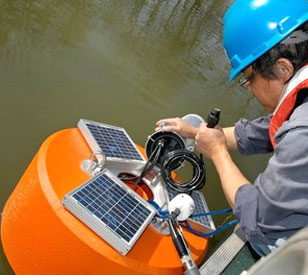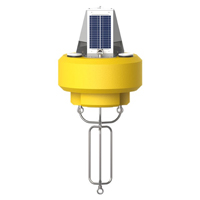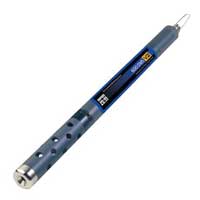 The Ottawa River in northwest Ohio has historically received runoff and discharges from several landfills, industrial facilities, and combined sewers that overflow after heavy rains, making it one of the most polluted waterways in the state.
The Ottawa River in northwest Ohio has historically received runoff and discharges from several landfills, industrial facilities, and combined sewers that overflow after heavy rains, making it one of the most polluted waterways in the state.
Despite efforts over the last 10 years to contain some of these pollution sources — capping landfills, cleaning industrial sites, and reducing sewer overflows — the river was until recently burdened by toxic chemicals that endangered humans and the local aquatic ecosystem. Sediment in the river was contaminated with a combination of polychlorinated biphenyls (PCBs), polycyclic aromatic hydrocarbons (PAHs), and heavy metals (primarily lead).
The Ottawa carried these pollutants directly into Lake Erie’s Maumee Bay. In fact, the river has been one of the lake’s leading sources of PCBs, which have prompted a number of state advisories against eating certain fish from both the river and bay.
To address these pollution concerns, a massive dredging cleanup of the river was implemented during the 2010 construction season. Officials chose to run the dredging operation 24 hours a day, six days a week.
The six-month-long project removed approximately 240,000 cubic yards of contaminated sediment from a 5.5-mile stretch of the river near downtown Toledo, making it one of the most significant cleanups in Great Lakes history. It was modeled after the 2006-07 cleanup of the Ashtabula River in northeast Ohio.
Maintaining aquatic health during the project was a key priority. The dredging site was carefully monitored using real-time data buoys from NexSens that measured sediment re-suspension levels to ensure they did not exceed specified limits.
Monitoring a massive cleanup
 The environmental consulting firm Natural Resource Technology of Pewaukee, Wisc. was contracted to assist with management of the contaminated sediments during the dredging project. Among the firm’s responsibilities was ensuring that the levels of sediment re-suspended into the water column did not exceed specified ranges. Too much sediment re-suspension (measured as turbidity) can severely reduce water quality and transport contaminants, posing a threat to cleanup objectives and aquatic health.
The environmental consulting firm Natural Resource Technology of Pewaukee, Wisc. was contracted to assist with management of the contaminated sediments during the dredging project. Among the firm’s responsibilities was ensuring that the levels of sediment re-suspended into the water column did not exceed specified ranges. Too much sediment re-suspension (measured as turbidity) can severely reduce water quality and transport contaminants, posing a threat to cleanup objectives and aquatic health.
NRT selected NexSens to design and configure a monitoring system for the project. Four NexSens buoy-based cellular data logging systems were installed to monitor turbidity levels at a background upstream location and downstream of each active dredge.
The rugged buoy platforms are constructed of an inner core of cross-linked polyethylene foam and a tough polymer skin coating. Each buoy was equipped with a submersible data logger with cellular telemetry, solar panels, and a navigational beacon.
YSI 600 OMS (Optical Monitoring System) sondes with optical turbidity probes were suspended beneath the monitoring buoys. The turbidity probes feature a self-cleaning wiper to provide accurate measurements at a pre-specified sampling interval. Before taking a reading, the mechanical wiper cleaned the sensing optics to ensure the measurement was not affected by biofouling, sediment, or debris.
During dredging operations, all data from the monitoring buoys transmitted in real time to an on-site PC running NexSens iChart software. iChart served as a centralized database for all incoming data.
The software includes an “Alarm Notification” feature that could inform project members quickly if turbidity levels had exceeded a specified range. iChart also automatically sent updates to the NexSens WQData web datacenter. The datacenter allowed personnel to review project information and real-time data online.
With this system in place, the field staff was able to monitor water conditions during the project, ensuring dredging operations did not cause particle re-suspension issues. If unacceptable turbidity levels had been observed, the staff would have been able to immediately notify the dredge operators to shut down or alter operations.
The NexSens CB-450 Data Buoy is designed for deployment in lakes, rivers, coastal waters, harbors, estuaries and other freshwater or marine environments.
The YSI 600OMS V2 measures dissolved oxygen, turbidity, chlorophyll, blue-green algae, or rhodamine in a low-cost package.
WQData LIVE is a web-based project management service that allows users 24/7 instant access to data collected from remote telemetry systems.



